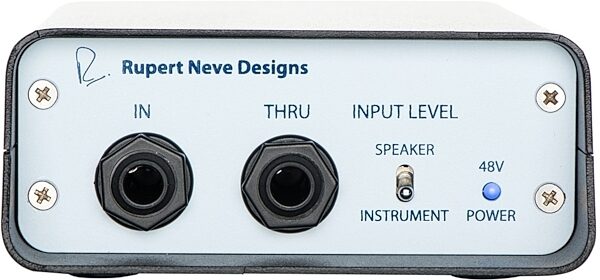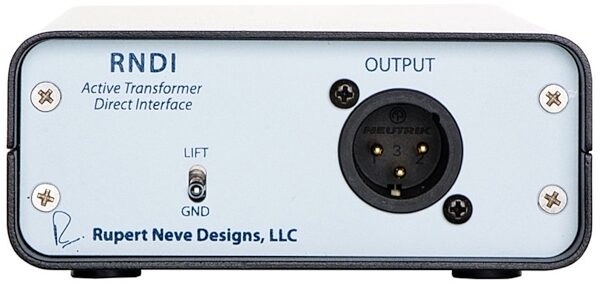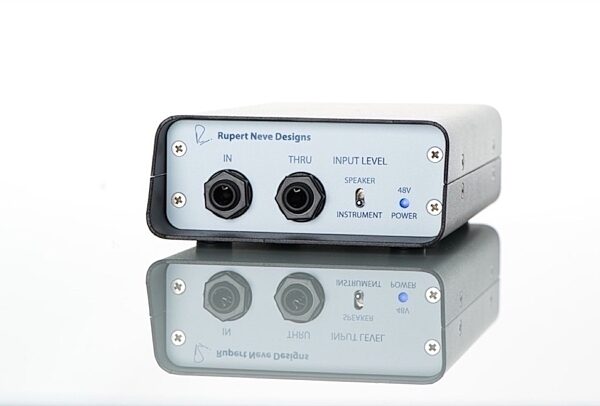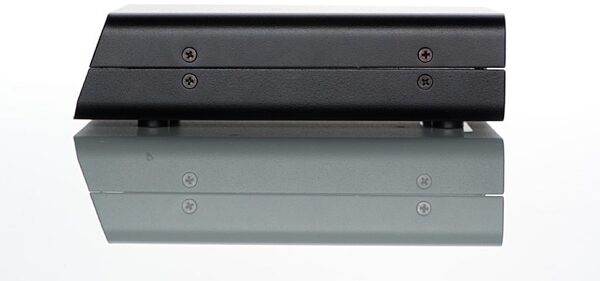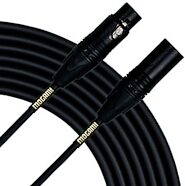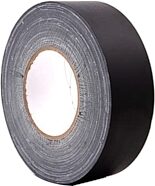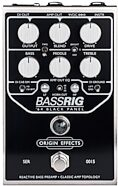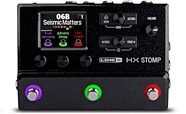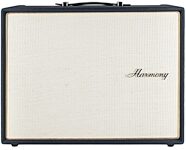Rupert Neve Designs RNDI Active Transformer DI Box


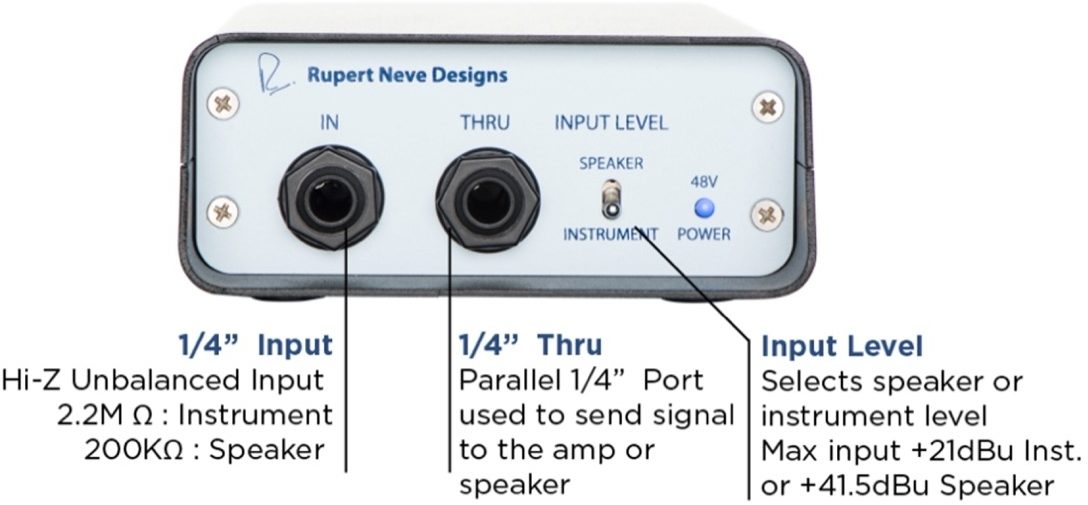
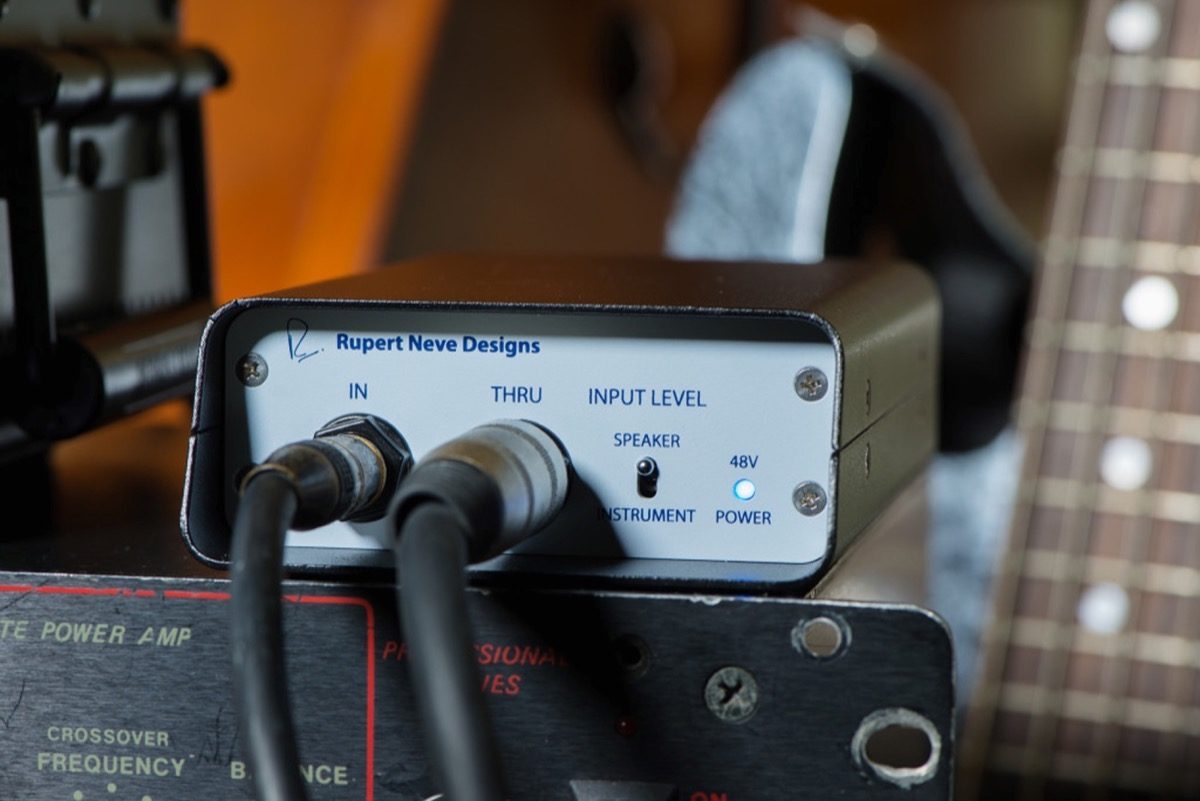

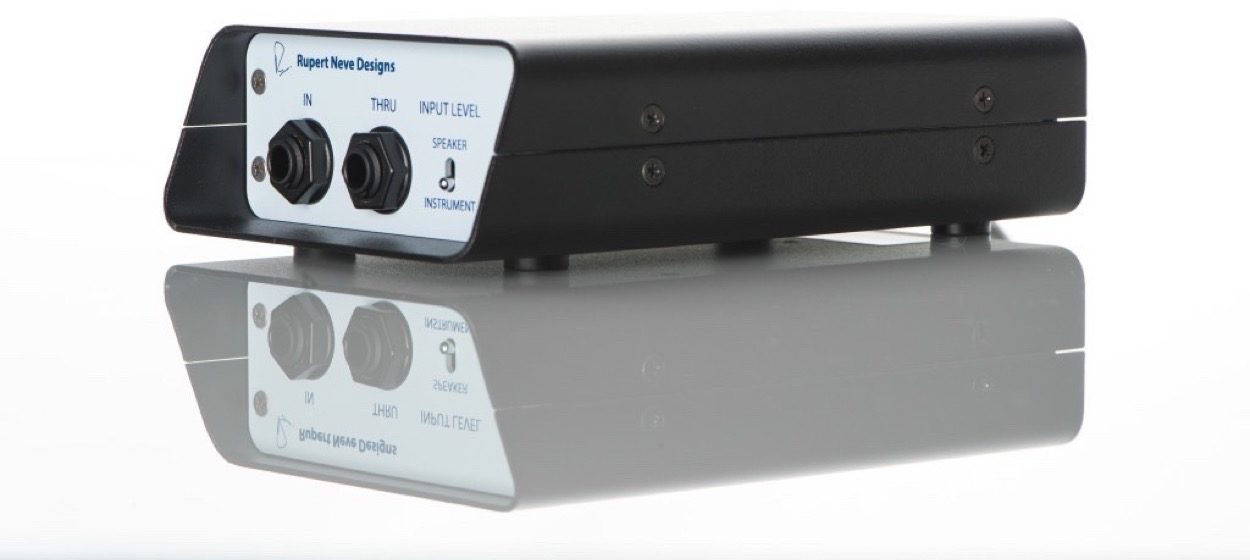

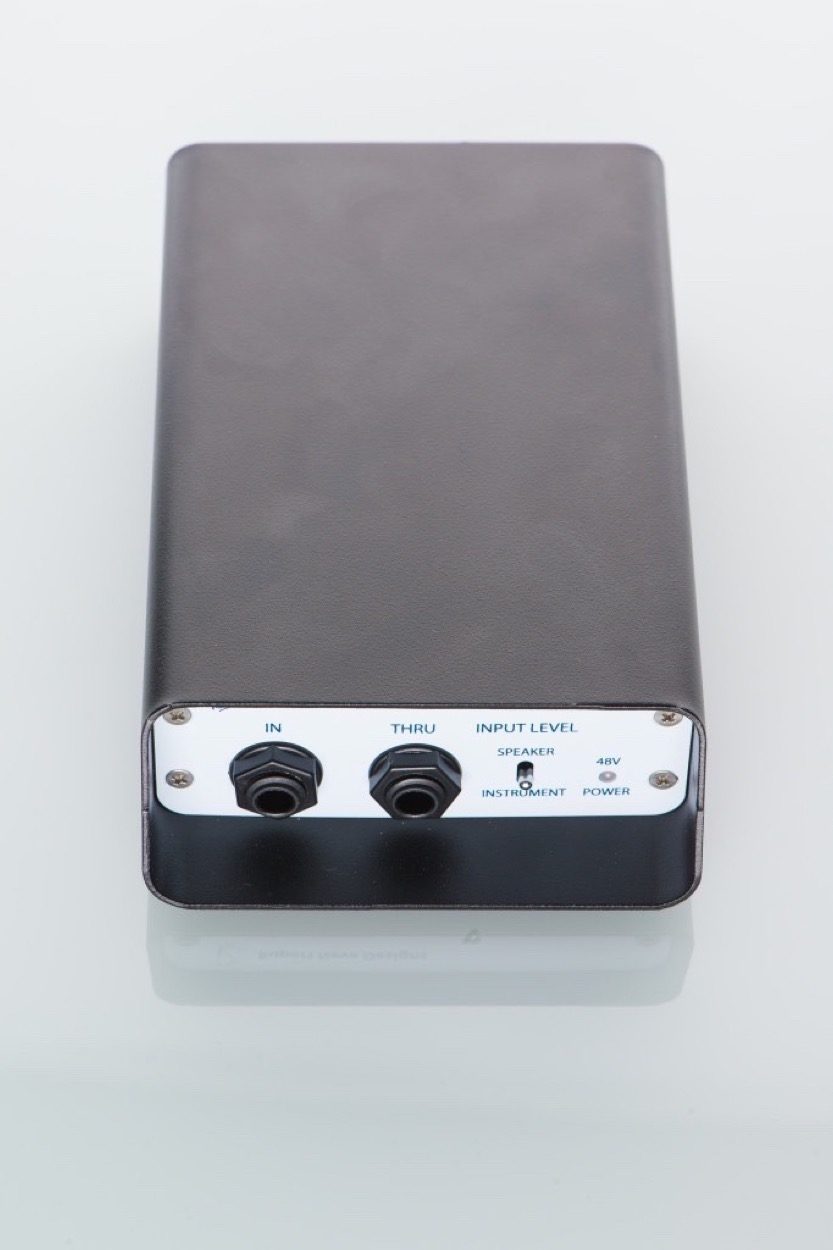
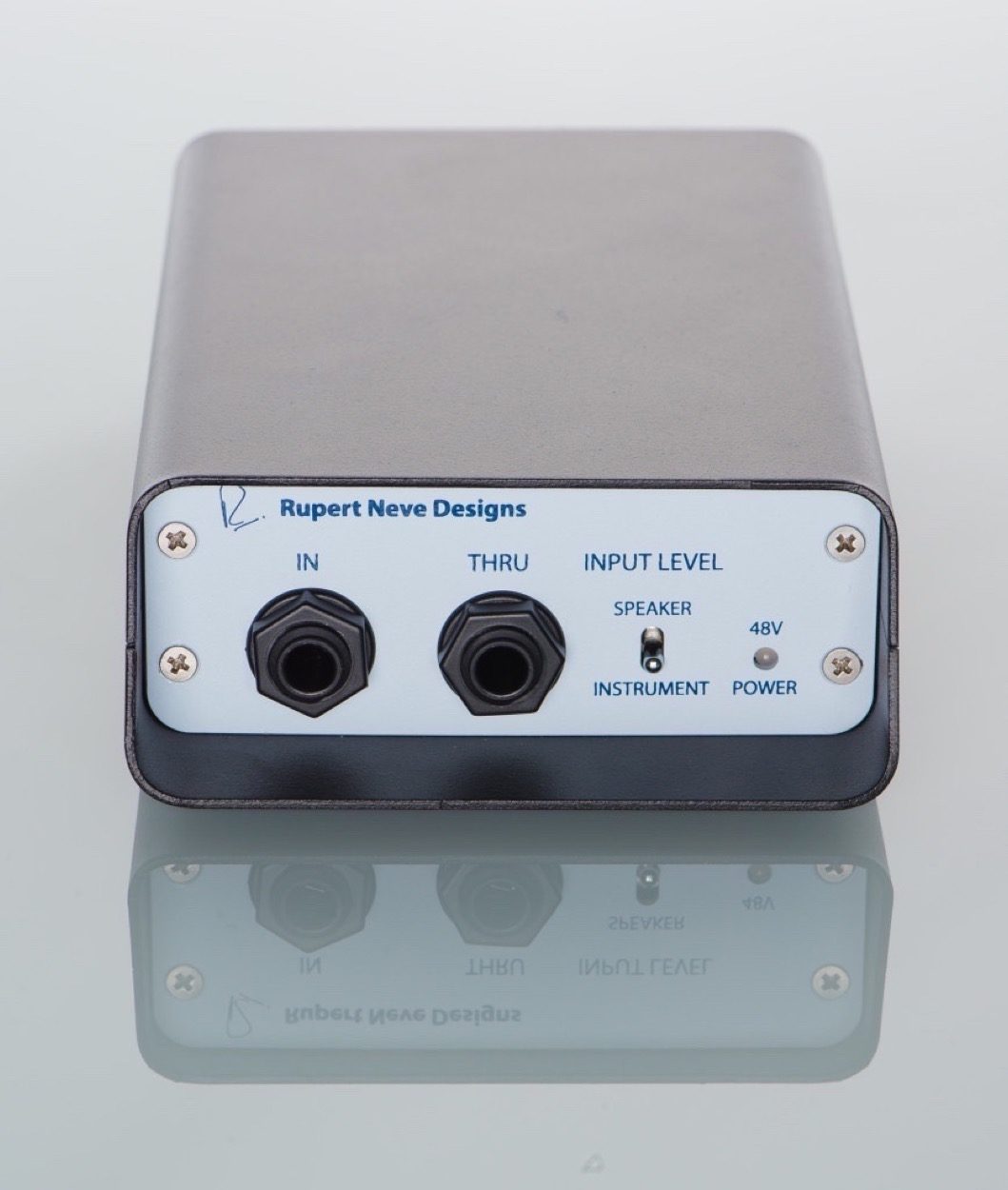
Plug into a pro DI box! With Neve-designed transformers and class-A biased discrete FET amplifiers, the RNDI makes the most of any instrument or line source.
Overview
The RNDI's signature sound is the product of new custom Rupert Neve-designed transformers and class-A biased, discrete FET amplifiers. The carefully orchestrated union of these two elements is key to the RNDI's unique response, delivering a powerful and vibrant direct sound capable of reproducing the full harmonic depth of basses, guitars, acoustic instruments, and professional line level sources. With portable, powerful, larger-than-life tone for your instrument and amplifier signals, the RNDI is truly the first standalone DI worthy of the Rupert Neve name.
RND's co-founder Josh Thomas talks about the most commonly played instrument at Rupert Neve Designs, and how it led to the RNDI:
Bassist and luthier Brady Muckelroy tests out a number of DIs with a Muckelroy Bass and a 1973 Fender Precison Bass:
The transformers provide superior passive isolation while adding musical harmonics and dimension to the sound. The low impedance, transformer balanced output excels at driving long cable runs, and performance is immensely consistent regardless of the connected equipment. This is very important for both live and studio environments where the unamplified signal may travel almost 100ft before hitting an amplifier. In other designs, these high capacitance lines cause major reductions in high frequencies, however the output stage of the RNDI unrivaled at handling long runs with minimal losses.
The class-A and discrete FET amplifier in the RNDI is powered by industry-standard 48V phantom power on the XLR connection, and creates a very high impedance input of 2M Ohms that ensures consistent performance with a wide variety of instruments. The significance of the RNDI's class-A design is that there is no crossover distortion added to the signal, which can add upper order odd harmonics to the sound that are musically dissonant in nature. With the RNDI, the overwhelming majority of harmonic content is 2nd order (octave) with some 3rd order present (fifth above octave). These musically relevant harmonics - present in subtle amounts - actually add to the richness of the original signal. The discrete aspect of the RNDI design means there are no ICs or digital components that can have negative effects on the tone.
These efforts to harmonize the performance of the transformer and the FET amplifier have resulted in the RNDI's extremely well balanced response. The low end tonality is thick and powerful, with frequency response several octaves below audibility. The high end is clear, present, and smooth, with a frequency response extending beyond 100kHz. The phase coherence is unrivaled at all frequencies, which keeps the sound as natural as possible - especially vital when blending the direct signal with a microphone capture of the same source. Simply put, there is no DI ever made that performs like the RNDI.
In speaker mode, the RNDI can handle the screaming output of a 1000-watt power amplifier (92 Vrms or 266Vp-p) to capture the full tone of the instrument, preamplifier, EQ, inserts, and the amplifier's output stages before it hits the speakers. This technique allows the engineer to avoid any bleed in a live environment and any unwanted tone added by the speaker cabinet or microphone. When used with modern speaker emulation plug-ins, this technique allows the engineer to take advantage of both the flexibility of digital modeling and the superior non-linear response of an actual analogue amplifier.
Note: with tube power amps, THE SPEAKER MUST BE CONNECTED to the THRU connection to provide a load for the amplifier. Please read your amplifier's manual to discern its range of acceptable loads. Solid state amps can generally be run without a speaker connected, although you should always consult your amplifier's manual to be sure. The RNDI can handle the full amplified output of a 1000W amp, so you can confidently drive the output stages of any amp less than 1000W to get your desired tone.
In an instrument configuration, the DI converts the impedance of the instrument signal, balances the signal (if unbalanced), provides a buffered output stage to send to a separate mic preamp, and optionally sends the THRU connection to the amp input. To get the best performance out of your RNDI, we recommend you use the best available cables and mic preamps, and output the maximum level from your instrument. The instrument connects to the IN jack, and if you want to feed an amplifier, connect the THRU output to your amplifier's input. The output of the RNDI in both instrument and speaker mode feeds a separate preamp for final gain.
read less
RND's co-founder Josh Thomas talks about the most commonly played instrument at Rupert Neve Designs, and how it led to the RNDI:
Bassist and luthier Brady Muckelroy tests out a number of DIs with a Muckelroy Bass and a 1973 Fender Precison Bass:
The Development
After coming into existence during an experimentation with new transformer designs, the RNDI was fine-tuned over a series of listening tests against the most popular high-end DIs available. It was in these tests where the RNDI always seemed to add another dimension to the sound and bring the instruments to life. The lows felt richer, deeper and fuller, and the highs had outstanding clarity without any added harshness. Most importantly, the design team noted: "As musicians, the RNDI consistently stood out as the DI we wanted to play through."The Elements of Direct Tone
The RNDI's signature sound is the product both of new custom Rupert… read more Neve-designed transformers and class-A biased, discrete FET amplifiers. The carefully orchestrated union of these two elements is key to the RNDI's unique response.The transformers provide superior passive isolation while adding musical harmonics and dimension to the sound. The low impedance, transformer balanced output excels at driving long cable runs, and performance is immensely consistent regardless of the connected equipment. This is very important for both live and studio environments where the unamplified signal may travel almost 100ft before hitting an amplifier. In other designs, these high capacitance lines cause major reductions in high frequencies, however the output stage of the RNDI unrivaled at handling long runs with minimal losses.
The class-A and discrete FET amplifier in the RNDI is powered by industry-standard 48V phantom power on the XLR connection, and creates a very high impedance input of 2M Ohms that ensures consistent performance with a wide variety of instruments. The significance of the RNDI's class-A design is that there is no crossover distortion added to the signal, which can add upper order odd harmonics to the sound that are musically dissonant in nature. With the RNDI, the overwhelming majority of harmonic content is 2nd order (octave) with some 3rd order present (fifth above octave). These musically relevant harmonics - present in subtle amounts - actually add to the richness of the original signal. The discrete aspect of the RNDI design means there are no ICs or digital components that can have negative effects on the tone.
These efforts to harmonize the performance of the transformer and the FET amplifier have resulted in the RNDI's extremely well balanced response. The low end tonality is thick and powerful, with frequency response several octaves below audibility. The high end is clear, present, and smooth, with a frequency response extending beyond 100kHz. The phase coherence is unrivaled at all frequencies, which keeps the sound as natural as possible - especially vital when blending the direct signal with a microphone capture of the same source. Simply put, there is no DI ever made that performs like the RNDI.
Game-Changing Headroom
In instrument mode, the RNDI's high input headroom of +21.5dBU is capable of handling not only instruments, but professional, line level sources like interfaces, CD players and drum machines without a pad. This allows the RNDI to serve as a way to "Re-Preamp" any previously recorded track using your interface and a desired pre-amp. To do this, simply connect a channel output of the interface to the input of the RNDI and connect the RNDI's output to the preamp and engage 48V. By "Re-Preamping" you can apply the tone of another preamp to the source and more accurately automate or control the drive level on the preamp.In speaker mode, the RNDI can handle the screaming output of a 1000-watt power amplifier (92 Vrms or 266Vp-p) to capture the full tone of the instrument, preamplifier, EQ, inserts, and the amplifier's output stages before it hits the speakers. This technique allows the engineer to avoid any bleed in a live environment and any unwanted tone added by the speaker cabinet or microphone. When used with modern speaker emulation plug-ins, this technique allows the engineer to take advantage of both the flexibility of digital modeling and the superior non-linear response of an actual analogue amplifier.
Speaker and Instrument Mode User Notes
In a speaker feed configuration, the DI is used post-power amplifier to capture the tone of the preamp and power amp. Be sure to switch the RNDI input level to speaker and connect the amplifier and speaker BEFORE turning the amplifier on.Note: with tube power amps, THE SPEAKER MUST BE CONNECTED to the THRU connection to provide a load for the amplifier. Please read your amplifier's manual to discern its range of acceptable loads. Solid state amps can generally be run without a speaker connected, although you should always consult your amplifier's manual to be sure. The RNDI can handle the full amplified output of a 1000W amp, so you can confidently drive the output stages of any amp less than 1000W to get your desired tone.
In an instrument configuration, the DI converts the impedance of the instrument signal, balances the signal (if unbalanced), provides a buffered output stage to send to a separate mic preamp, and optionally sends the THRU connection to the amp input. To get the best performance out of your RNDI, we recommend you use the best available cables and mic preamps, and output the maximum level from your instrument. The instrument connects to the IN jack, and if you want to feed an amplifier, connect the THRU output to your amplifier's input. The output of the RNDI in both instrument and speaker mode feeds a separate preamp for final gain.
Groundbreaking Direct Tone
When class-A, discrete amplifiers meet Rupert's custom transformers, good things happen to your tone. The RNDI is imbued with the unique components and design knowledge that makes it worthy of the Rupert Neve nameHuge Headroom
The high input headroom of +21.5dBU is capable of handling professional, line level sources without a pad - and in speaker mode, the RNDI can handle the full output of a 1000-watt power amplifier (92 Vrms or 266Vp-p).Rugged Solid-Steel Frame
The rugged steel chassis features an industrial-grade powder coating, and is built to withstand the severe stresses of life on the road.Takes All Kinds
The RNDI has immensely consistent performance across a wide variety of sources due to its 2M Ohm discrete FET input and high headroom. You can confidently use the RNDI with basses, guitars, acoustic instruments, keyboards, and even professional line level devices. In instrument mode, you can even connect a professional line level interface output to "Re-Preamp" a previously recorded source.Drive Longer Lines
The low impedance transformer coupled output - below 50 ohms - is capable of driving long lines with unrivaled high frequency performance.1/4" THRU Output
In instrument mode the THRU output can feed the amplifier input for reinforcement. In speaker mode, the THRU is used to feed the amplified signal to the speaker.Best in Class Phase Coherence
Phase coherence is excellent at all frequencies, which keeps the sound well-balanced and natural, and is especially vital when blending the direct signal with a microphone capture of the same source.Ground Lift
A ground lift switch is provided on the back to help fix any problematic grounding.Phantom Powered
The RNDI is powered by standard 48V phantom power. Power is indicated by a blue LED on the front panel.
WARNING: Cancer and Reproductive Harm - www.p65Warnings.ca.gov.
Specs
- Noise:
- Measured Output, un-weighted, 22Hz-22kHz, source impedance 150 Ohms to 10K Ohms
- Better than -110dBV
- Input Impedance:
- Instrument Setting: 2.2 Meg Ohm
- Speaker Setting: 200k Ohm
- Output Impedance: Less than 40 Ohms
- Frequency Response:
- +/- 0.25dB from 25Hz - 44kHz
- +/- 1dB from 12.5Hz - 63kHz
- -3dBu @ 92kHz
- Maximum Input Level:
- Instrument = +21dBu Typical Speaker = +41.5dBu, 92 Vrms (266Vp-p)
- Maximum Output Level:
- +11.5dBu output at maximum input level
- Total Harmonic Distortion plus Noise:
- @ 1kHz, +20dBu input level:
- 0.25% Typical (2nd and 3rd harmonic)
- @ 1kHz, -20dBu input level :
- 0.015% Typical (2nd and 3rd harmonic)
- @ 20Hz, -20dBu input level :
- 0.75% Typical (2nd and 3rd harmonic)
- Power Requirements: Phantom power, 4.5mA @ +48VDC
- Weight: 1.5lbs
- Dimensions: 6.25" long x 4" wide x 1.5" high
- Measured Output, un-weighted, 22Hz-22kHz, source impedance 150 Ohms to 10K Ohms
- Better than -110dBV
- Input Impedance:
- Instrument Setting: 2.2 Meg Ohm
- Speaker Setting: 200k Ohm
- Output Impedance: Less than 40 Ohms
- Frequency Response:
- +/- 0.25dB from 25Hz - 44kHz
- +/- 1dB from 12.5Hz - 63kHz
- -3dBu @ 92kHz
- Maximum Input Level:
- Instrument = +21dBu Typical Speaker = +41.5dBu, 92 Vrms (266Vp-p)
- Maximum Output Level:
- +11.5dBu output at maximum input level
- Total Harmonic Distortion plus Noise:
- @ 1kHz, +20dBu input level:
- 0.25% Typical (2nd and 3rd harmonic)
- @ 1kHz, -20dBu input level :
- 0.015% Typical (2nd and 3rd harmonic)
- @ 20Hz, -20dBu input level :
- 0.75% Typical (2nd and 3rd harmonic)
- Power Requirements: Phantom power, 4.5mA @ +48VDC
- Weight: 1.5lbs
- Dimensions: 6.25" long x 4" wide x 1.5" high
- Dimensions and Weight in Packaging
- Base Item
- Shipping Weight: 2.25 lbs
- Shipping Dimensions: 10 x 8 x 3 in
- Manufacturer Part Number (MPN): RNDI
Documents and Manuals
For support or warranty questions, please contact the manufacturer:
Email: service@rupertneve.com
Web: https://rupertneve.com/support
Email: service@rupertneve.com
Web: https://rupertneve.com/support
Reviews
Reviewers gave this product an overall rating of 5 out of 5 stars.
(2 ratings)
Submitted January 16, 2019 by Jonathan B in Mesquite, TX
"Stop looking, just buy it."
Verified Customer
zZounds has verified that this reviewer made a purchase from us.
This may be the best all around DI box on the planet. It's not much more money than the industry standard Radial JDI and J48, and it blows both of them away. The reach on the low end is insane. It's like adding another octave on the bottom of a bass guitar compared to a passive DI like the JDI. Not in an inflated or bloated way, it just goes a lot deeper. It keeps the speed and clarity on the top end you get from an active DI like the J48, but without being harsh. It's has that warm, smooth transformer sound you get from a good passive DI but with the high end fidelity and punch you get from an active DI. It really is the best of both worlds.I typically use them for bass DI live, but they also excel at synths and keyboards. I've yet to find an application that they don't better my JDIs and J48s. My only problem is that I need more of them.Build quality is very good. Mine get used in a live environment almost every day and are no worse for wear. These things are tanks.
Musical Background:
Professional FOH Engineer for 20+ years.
Musical Style:
Whatever pays the bills.
12 of 12 people (100%) people found this review helpful. Did you?
Thanks for your opinion!
New
$299.00
- 8 x$37.38
This is a carousel with product cards. Use the previous and next buttons to navigate.
People who bought this item also bought
This is a carousel with product cards. Use the previous and next buttons to navigate.
